Sargon III
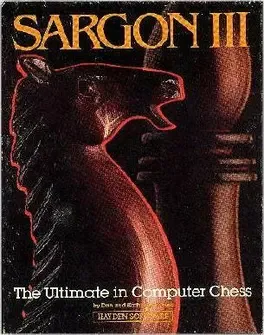
Buy
Part of collection:
Sargon
(last 3 games)

Third in a series of chess games.

Origin The original SARGON was written by Dan and Kathleen 'Kathe' Spracklen in a Z80-based computer called Wavemate Jupiter III[1] using assembly language through TDL Macro Assembler. The name was originally written entirely in capitals because early computer operating systems such as CP/M did not support lower-case file names. Introduction SARGON was introduced at the 1978 West Coast Computer Faire where it won the first computer chess tournament held strictly for microcomputers, with a score of 5-0.[2][3] This success encouraged the authors to seek financial income by selling the program directly to customers. Since magnetic media were not widely available at the time, the authors placed an advert in Byte Magazine and mailed $15 photocopied listings that would work in any Z80-based microcomputer.[1] Availability of the source code allowed porting to other machines. For example, the March–April 1979 issue of Recreational Computing describes a project that converted Sargon to an 8080 program by using macros. Later the Spracklens were contacted by Hayden Books and a book was published.[4] Commercialization through electronic media When magnetic media publishing became widely available, a Navy Petty Officer, Paul Lohnes, ported Sargon to the TRS-80, altering both graphics, input, and housekeeping routines leaving the Spracklen's chess-playing algorithm intact. Paul consulted with the Spracklens, both living in San Diego at the time, to make the TRS-80 version an instant success with the help of Hayden Book's newly established software division: Hayden Software. Paul was not involved in further refinements to the TRS-80 version due to his reassignment to sea duty shortly after signing the deal with Hayden Software. In the early 1980s SARGON CHESS was ported to several earlier microcomputers, i.e. NASCOM (by Bits & PCs, 1981), Exidy Sorcerer, Sharp MZ 80K,[5] and many others. A complete rewrite was necessary later for the Apple II port, made by Kathleen's brother Gary Shannon. Both were published by Hayden Software. Sequels The Spracklens made significant improvements on the original program[1] and released Sargon II. In 1978 it tied for third at the ninth North American Computer Chess Championship despite being seeded ninth of 12 entries. Sargon finished only behind Belle and Chess 4.7, and defeated AWIT—running on a $5 million Amdahl mainframe—amazing the audience.[6][3][1] That year they published a series of articles in BYTE on computer chess programming,[2][7] stating "we think it would be nice if not everyone had to reinvent the wheel".[6] Sargon II was ported to a variety of personal computers popular in the early 1980s.[8] The game engine featured multiple levels of lookahead to make it more accessible to beginning chess players. BYTE in 1980 estimated that Sargon II had a 1500 rating at the highest tournament-time difficulty level, and speculated that it was the best chess program on sale, including dedicated devices.[9] Sargon 2.5, sold as a ROM module for the Chafitz Modular Game System, was identical to Sargon II but incorporated pondering.[10] It received a 1641 rating at the Paul Masson tournament in June–July 1979, and 1736 at the San Jose City College Open in January 1980.[3] Sargon 3.0 finished in seventh place at the October 1979 North American Computer Chess Championship. The competition had improved, but 3.0 drew against Cray Blitz and easily defeated Mychess, its main microcomputer rival. In December 3.0 easily won the second microcomputer championship in London.[3] In 1980, the Spracklens' Reversi game finished in first place at a computer tournament at Northwestern University, and in 1981 it finished in third place at the Santa Cruz Open Othello Tournament.[11] Sargon III was a complete rewrite from scratch. Instead of an exchange evaluator, this version used a capture search algorithm. Also included was a chess opening repertoire. This third version was written originally for the 6502 assembler and was commercially published by Hayden Software in 1983. Apple contacted the Spracklens and, after a port for 68000 assembly, Sargon III was the first third-party executable software for the Macintosh.[1] After the demise of Hayden Software, later chess programs were also released under the name Sargon, including Sargon IV (Spinnaker Software), Sargon V (Activision) and a CD-i title simply named Sargon Chess. The Spracklens concurrently wrote the engines for the dedicated chess computers produced by Fidelity Electronics, which won the first four World Microcomputer Chess Championships.
Could be interesting

The team behind the hit party games Fibbage, Quiplash, and YOU DON’T KNOW JACK presents Drawful 2, the game of terrible drawings and hilariously wrong answers! You use your phone or tablet to draw weird and funny things like “pitcher of nachos” or “death by trombone.” The other players type in what they think the (probably terrible) drawing is and those become the multiple-choice wrong answers. Then everyone - even an audience of potentially thousands – tries to guess the REAL answer. Drawful 2 is a go-to party game that everyone can play and enjoy!

Origin The original SARGON was written by Dan and Kathleen 'Kathe' Spracklen in a Z80-based computer called Wavemate Jupiter III[1] using assembly language through TDL Macro Assembler. The name was originally written entirely in capitals because early computer operating systems such as CP/M did not support lower-case file names. Introduction SARGON was introduced at the 1978 West Coast Computer Faire where it won the first computer chess tournament held strictly for microcomputers, with a score of 5-0.[2][3] This success encouraged the authors to seek financial income by selling the program directly to customers. Since magnetic media were not widely available at the time, the authors placed an advert in Byte Magazine and mailed $15 photocopied listings that would work in any Z80-based microcomputer.[1] Availability of the source code allowed porting to other machines. For example, the March–April 1979 issue of Recreational Computing describes a project that converted Sargon to an 8080 program by using macros. Later the Spracklens were contacted by Hayden Books and a book was published.[4] Commercialization through electronic media When magnetic media publishing became widely available, a Navy Petty Officer, Paul Lohnes, ported Sargon to the TRS-80, altering both graphics, input, and housekeeping routines leaving the Spracklen's chess-playing algorithm intact. Paul consulted with the Spracklens, both living in San Diego at the time, to make the TRS-80 version an instant success with the help of Hayden Book's newly established software division: Hayden Software. Paul was not involved in further refinements to the TRS-80 version due to his reassignment to sea duty shortly after signing the deal with Hayden Software. In the early 1980s SARGON CHESS was ported to several earlier microcomputers, i.e. NASCOM (by Bits & PCs, 1981), Exidy Sorcerer, Sharp MZ 80K,[5] and many others. A complete rewrite was necessary later for the Apple II port, made by Kathleen's brother Gary Shannon. Both were published by Hayden Software. Sequels The Spracklens made significant improvements on the original program[1] and released Sargon II. In 1978 it tied for third at the ninth North American Computer Chess Championship despite being seeded ninth of 12 entries. Sargon finished only behind Belle and Chess 4.7, and defeated AWIT—running on a $5 million Amdahl mainframe—amazing the audience.[6][3][1] That year they published a series of articles in BYTE on computer chess programming,[2][7] stating "we think it would be nice if not everyone had to reinvent the wheel".[6] Sargon II was ported to a variety of personal computers popular in the early 1980s.[8] The game engine featured multiple levels of lookahead to make it more accessible to beginning chess players. BYTE in 1980 estimated that Sargon II had a 1500 rating at the highest tournament-time difficulty level, and speculated that it was the best chess program on sale, including dedicated devices.[9] Sargon 2.5, sold as a ROM module for the Chafitz Modular Game System, was identical to Sargon II but incorporated pondering.[10] It received a 1641 rating at the Paul Masson tournament in June–July 1979, and 1736 at the San Jose City College Open in January 1980.[3] Sargon 3.0 finished in seventh place at the October 1979 North American Computer Chess Championship. The competition had improved, but 3.0 drew against Cray Blitz and easily defeated Mychess, its main microcomputer rival. In December 3.0 easily won the second microcomputer championship in London.[3] In 1980, the Spracklens' Reversi game finished in first place at a computer tournament at Northwestern University, and in 1981 it finished in third place at the Santa Cruz Open Othello Tournament.[11] Sargon III was a complete rewrite from scratch. Instead of an exchange evaluator, this version used a capture search algorithm. Also included was a chess opening repertoire. This third version was written originally for the 6502 assembler and was commercially published by Hayden Software in 1983. Apple contacted the Spracklens and, after a port for 68000 assembly, Sargon III was the first third-party executable software for the Macintosh.[1] After the demise of Hayden Software, later chess programs were also released under the name Sargon, including Sargon IV (Spinnaker Software), Sargon V (Activision) and a CD-i title simply named Sargon Chess. The Spracklens concurrently wrote the engines for the dedicated chess computers produced by Fidelity Electronics, which won the first four World Microcomputer Chess Championships.
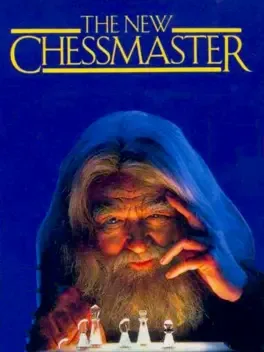
Say goodbye to lost pieces and slow opponents. THE NEW CHESSMASTER lets you play in one of 16 different skill levels from Newcomer to Grandmaster. A Teaching mode allows you to examine all possible moves more easily, letting you play out then reverse any scenario. You can pause your game anytime and return later without having to set up the board all over again. Play against the computer or a human adversary in the most inclusive chess package ever. Whether you're looking for a chess companion, a well-suited opponent, or a friendly instructor, THE NEW CHESSMASTER is the perfect solution.
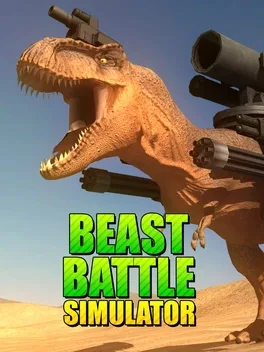
Beast Battle Simulator is a physics based battle-simulation sandbox game featuring dinosaurs and animals. Kamikaze Zebras VS. T-Rex with laser guns, Lions with machine guns VS. a flock of 50 seagulls; anything is possible! Watch as the beasts dismember and rip each other apart in gory detail!
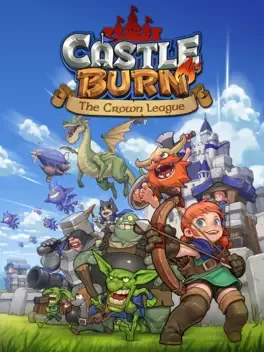
Lead the armies to victory in a fantasy RTS game.
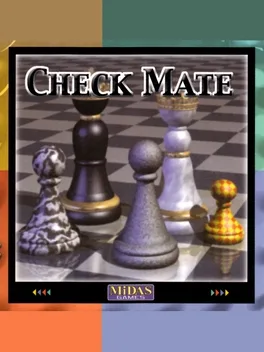
Dozens of different options and visual guides make Check Mate the perfect way to improve your game. Choose from a range of difficulty settings as you attempt to beat the computer, or checkmate a friend in the two-player mode.
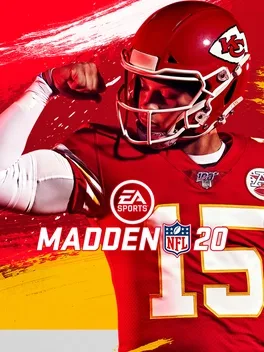
Feel like an NFL Superstar in Madden NFL 20. Be the Face of an NFL franchise where the decisions you make matter in your journey to become an NFL Superstar in ‘FACE OF THE FRANCHISE: QB1’. Feel the emotion, personality, and power of NFL Superstars with ‘SUPERSTAR X-FACTOR’, an all-new abilities progression system that reveals special abilities for today’s most exciting NFL Superstars heightening the level strategy and excitement in every game.
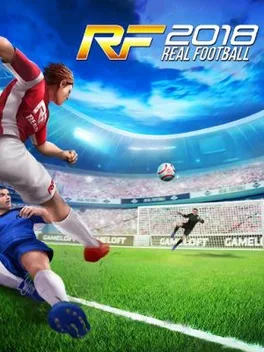
Real Football / Soccer is a series of mobile football/soccer games by Gameloft that has been released annually since 2004.
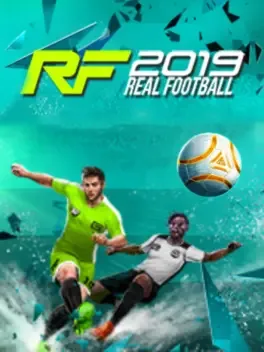
Real Football / Soccer is a series of mobile football/soccer games by Gameloft that has been released annually since 2004.
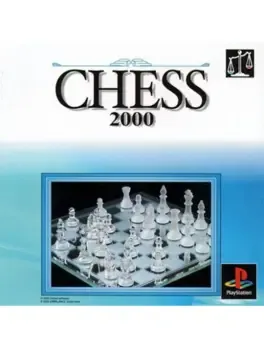
Chess 2000 is a digital recreation of the board game of the same title. The game features commentary, advices, rules explanation and a 2 players vs mode. The game features 3 different pieces colours and boards, 3 different backgrounds and 5 different kind of pointers.